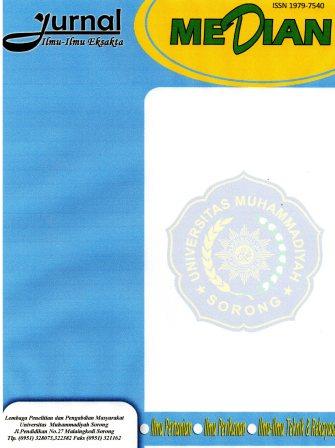Market chain, Economic values and Quality of Massoi bark collected from Fakfak district in West Papua Province
DOI:
https://doi.org/10.33506/md.v16i2.3591Keywords:
Market chain, economic values, massoi barks, Fakfak and West Papua provinceAbstract
Massoi (Cryptocarya massoi (Oken) Kostem) is non-timber forest products of spices utillized for as food flavour, traditional medicine, and pharmacheutical material. This research is designed to describe the market chain, economic values, natural disturbance in local farming lands, natural regenarion, legal harvesting permit, and evaluate masohi bark quality to SNI 7941:2013, and determine an intervention for to increase the added values for local farmers. This research was undertaken in 13 villages at 6 subdistricts in Fakfak district West Papua. Interviews based on the questioner and field survey were conducted to collect the data. The results indicated that qualitatively local farming land for Masohi is 102,5 ha in total with for an average distance of 3.23 km form their homes. These farming land are scattered in both secondary and primary forest, cultivated with agroforestry system and planted insite ot in between Myristica trees. Regenerations are done using local nursery and natural sapling from the mother trees. Prices of the dried masohi bark have vary, at farmer IDR 50.000 – 60.000/kg, local collecter traders IDR 70.000/kg and legal harvesting permit holders for IDR 120.000/kg. An innovation for producing packaging masohi products with labels, standaritation and certification could provide significant impact on the added value for local farmers. The majoritas (53,85%) for legal harvesting permit is non-local communities. Local regulation is needed to gain the added values for masohi farmers. Masohi bark collected from Fakfak district could be utilized for raw material for Jamu and essential oil but properly drying is required to reduce the moisture content and elimate fungi contamination.
References
Azhar, M. A. M. (2020). Chemical Composition and Biological Activities of Essential Oils of the Genus Litsea (Lauraceae) – A Review. 85(2).
Graf, M., & Stappen, I. (2022). Beyond the Bark: An Overview of the Chemistry and Biological Activities of Selected Bark Essential Oils. Molecules, 27(21), 7295. https://doi.org/10.3390/molecules27217295
Hastanti, B. W., & Noya, J. (2018). Karakteristik, Kemiskinan, Gender Dan Persepsi Pencari Masoi (Cryptocarya massoia (Oken) Kosterm.) (Studi Kasus di Kabupaten Teluk Wondama, Provinsi Papua Barat). Jurnal Penelitian Kehutanan Faloak, 2(1), 39–56. https://doi.org/10.20886/jpkf.2018.2.1.39-56
Hutapea, F. J., Kuswandi, R., & Asmoro, J. P. (2020). POTENSI DAN SEBARAN MASOI (Cryptocarya massoy) DI PAPUA BARAT. Jurnal Penelitian Kehutanan Faloak, 4(1), 57–70. https://doi.org/10.20886/jpkf.2020.4.1.57-70
Nugroho, J., Wanma, J., Susanti, C., Husodo, S., & Mawikere, N. (2019). Penurunan Stok Tegakan Alami Masohi [Cryptocarya Massoy (Oken) Kosterm] di Kabupaten Nabire. Igya ser hanjop: Jurnal Pembangunan Berkelanjutan, 1(1), 11–18. https://doi.org/10.47039/ish.1.2019.11-18
Rali, T., Wossa, S., & Leach, D. (2007). Comparative Chemical Analysis of the Essential Oil Constituents in the Bark, Heartwood and Fruits of Cryptocarya massoy (Oken) Kosterm. (Lauraceae) from Papua New Guinea. Molecules, 12(2), 149–154. https://doi.org/10.3390/12020149
Romero-Guido, C., Belo, I., Ta, T. M. N., Cao-Hoang, L., Alchihab, M., Gomes, N., Thonart, P., Teixeira, J. A., Destain, J., & Waché, Y. (2011). Biochemistry of lactone formation in yeast and fungi and its utilisation for the production of flavour and fragrance compounds. Applied Microbiology and Biotechnology, 89(3), 535–547. https://doi.org/10.1007/s00253-010-2945-0
Standar Nasional Indonesia 7941. (2013). Standar Nasional Indonesia (SNI) Kulit Masohi. SNI 7941:2013.
Triantoro, R. G. N., & Erna, C. M. E. (2007). The Chemical Content of Kulilawang (Cinnamomum culilawane Bl.) and Masoi (Cryptocaria massoia), Indonesian Wood Research Journal.Vol. 5(2), pp: 85–92.
Tuturop, A., Nugroho, J. D., & Hendri. (2022). Pengetahuan lokal berbasis masyarakat adat untuk pengelolaan tanaman masohi: Pembelajaran dari Distrik Teluk Patipi Kabupaten Fak-Fak. Cassowary, 5(1), 1–10. https://doi.org/10.30862/casssowary.cs.v5.i1.113
Wahyudi. (2014). Buku Pengangan Hasil Hutan Bukan Kayu. Pohon Cahaya Yogyakarta.
Yeny, I., Darwo, & Nuroniah, H. S. (2020). Sustainability of masoyi (Cryptocarya Massoy (Oken) Kosterm) for essential oil industry materials. IOP Conference Series: Materials Science and Engineering, 935(1), 012071. https://doi.org/10.1088/1757-899X/935/1/012071
Yuanjaya, P. (2018). Mengejar Ketertinggalan: Menggali Potensi Sektor Agribisnis Kabupaten Fakfak, Provinsi Papua Barat. Jurnal Natapraja Vol. 6 (1) pp: 99-114.
Downloads
Published
How to Cite
Issue
Section
License

This work is licensed under a Creative Commons Attribution-ShareAlike 4.0 International License.
Authors who publish with this journal agree to the following terms:
Authors retain copyright and grant the journal right of first publication with the work simultaneously licensed under a Creative Commons Attribution-ShareAlike (CC BY-SA)Â that allows others to share the work with an acknowledgement of the work's authorship and initial publication in this journal.
Authors are able to enter into separate, additional contractual arrangements for the non-exclusive distribution of the journal's published version of the work (e.g., post it to an institutional repository or publish it in a book), with an acknowledgement of its initial publication in this journal.
Authors are permitted and encouraged to post their work online (e.g., in institutional repositories or on their website) prior to and during the submission process, as it can lead to productive exchanges, as well as earlier and greater citation of published work.





